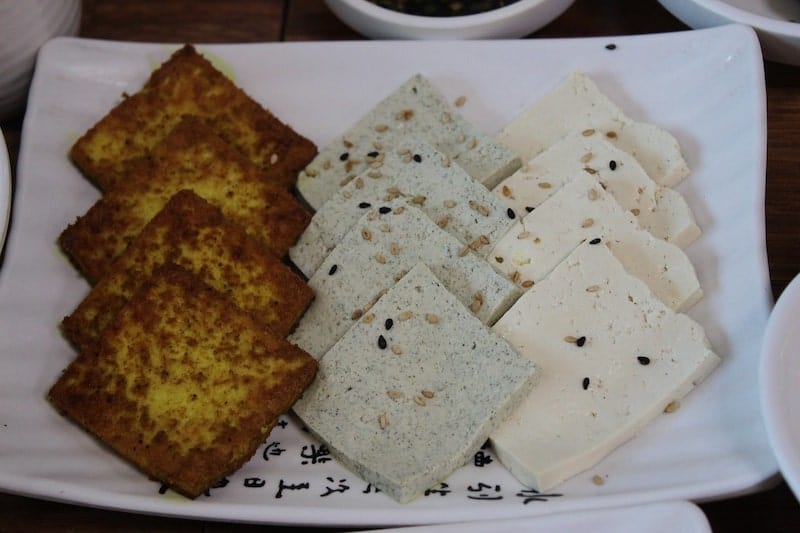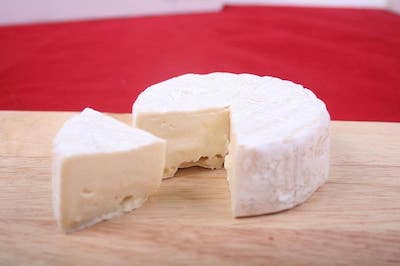What Are the Different Types of Tofu?
The world of tofu can seem daunting. With so many different product varieties out there, it can be challenging to determine which tofu would work best for your culinary needs.
What sets the different types of tofu apart is the amount of water contained in each variation.
From super-firm to silken, the difference between these products is how much water has been pressed out of them. Most tofu is categorized as silken, soft, medium, or extra firm.
This article will look at the characteristics that define the different types of tofu.
How Many Types of Tofu Are There?
Different kinds of tofu are defined by their consistency: the more water content, the softer or silkier the product.
Tofu is grouped as super-firm, extra-firm, firm, regular or silken, with silken tofu having the highest water content.
Pressing out more water helps make tofu firm, which also increases the fat and protein content of the product. The more water tofu contains, the longer it takes to bake or fry.
Tofu Firmness Scale
Silken tofu is the softest type of tofu and is similar to a soft cheese.
Firm tofu, which sits somewhere in the middle of the firmness scale, has the same texture as feta cheese and is the most common type of tofu.
The super-firm version of the product is often substituted for meat as both are of similar firmness.
Let’s take a closer look at the different types of tofu and where they fall on the tofu firmness scale.
Silken Tofu
Silken tofu contains the most water and is likely to fall apart when held. Given this, it’s know for it’s silky and smooth texture.
It can be used as a cream, ricotta substitute, in smoothies, or even a filling for various dishes.
Regular Tofu
This tofu is commonly used in Asian cuisine and is often added to soups and stews. The product, while soft, is firmer than silken tofu and quickly absorbs flavors in sauces.
You can also make various spreads with this regular tofu. Frying the ingredient is not recommended as it is likely to break apart.
Firm Tofu
Most people tend to buy firm tofu because it is incredibly compact and is easy to chop. This type of tofu is usually packaged in a liquid.
Firm tofu is versatile and can be fried, added to a stew, or utilized as a filling. You can even smoke it.
Ensure that it’s thoroughly dry before cooking to absorb the dish’s flavors properly.
Extra-Firm Tofu
Extra-firm tofu has a lower water content than firm tofu, which means it doesn’t absorb marinades as well.
However, it can be prepared in the same way as the firm variety as it can handle pan-frying and deep-frying without crumbling.
Tokwa, a type of Filipino tofu, is a great example of extra-firm tofu.
Super-Firm Tofu
Super-firm tofu can easily be mistaken for meat, making it an excellent substitute for the non-vegetarian product.
You can make it into cubes, wedges, or strips. Super-firm tofu isn’t widely available.
The less water tofu has, the harder it is to infuse with flavor. Firm tofu has an outstanding balance between firmness and water content.
It’s solid enough to handle with ease while containing enough water to absorb different flavors.
Different Types of Tofu and Their Uses
Tofu comes in varying textures, which determine how the product is prepared.
By examining their various characteristics as described below, you can figure out the most beneficial methods of using your tofu.
| Characteristics | Preparation | Ideal Dishes | |
| Silken Tofu | A custard-like texture that works well in creamy or blended foods. | Delicate to deal with and should be handled with care. It would be best to buy it in a tub and not a box. | Stews, sauces, smoothies, desserts |
| Fresh, Medium Tofu | Softer than firm tofu and with more bounce with a very porous texture. | Absorbs flavors easily but will need to be pressed when pan-frying. It’s best used in stews and curries. | Curries, stews, soups, scrambled |
| Fresh, Firm Tofu | Dense blocks of tofu sold in water baths; are easy to handle and have little bounce to them; easily manipulate them with a cooking spoon without breaking them. | It takes on flavors easily and will not require pressing to remove extra water. | Baked meals, pan-fried or stir-fried dishes, patties, filling for dumplings |
| Fresh, Pressed Tofu | A very firm and compact tofu with a rubbery texture; challenging to penetrate with new flavors. | It does not require pressing and can be cut into desired pieces for cooking. It would be best to use bold spices as this tofu doesn’t absorb flavors easily. | Baked dishes, stir-fry, pan-fry |
| Dried Tofu | A more intense flavor than fresh tofu and is typically thin and brittle. | It should be soaked for at least an hour before cooking. Dried tofu is easier cut with kitchen scissors than a knife. | Stews, soups, hot pots, pan-fry, dessert |
| Deep-fried Tofu | Two varieties of deep-fried tofu; Atsuage and Aburage. These are commonly used in Japanese and Chinese cuisine. | Pre-soaking is not required, but it allows it to absorb more flavors. | Pan-fry, stir-fry, soups, stuffing |
| Fermented Tofu | These small tofu pieces are suspended in brine and stored in ceramic jars. | Remove the tofu from the brine, mash it into a paste and add it to your dish. | Marinades, sauces, stews |
Pressing tofu is the most common step in preparing tofu.
It involves placing a block of medium-firm tofu on a flat surface, sandwiching it between dish towels, and weighing it down with a heavy object.
This process removes excess moisture from the product, making it easier to cook.
Tofu often comes suspended in liquid to prevent it from drying out. To drain it, pour out the liquid and place the tofu on an absorbent surface for five to 10 minutes.
In Summary
There are different types of tofu, each with varying textures and water content. The firmness of the tofu will determine the best cooking method for the product.
How you prepare and eat this ingredient is primarily a matter of preference, but it’s essential to remember that the less water it has, the less likely it is to absorb flavor.
Therefore, you should cook firm tofu with bold spices to ensure a savory meal.







